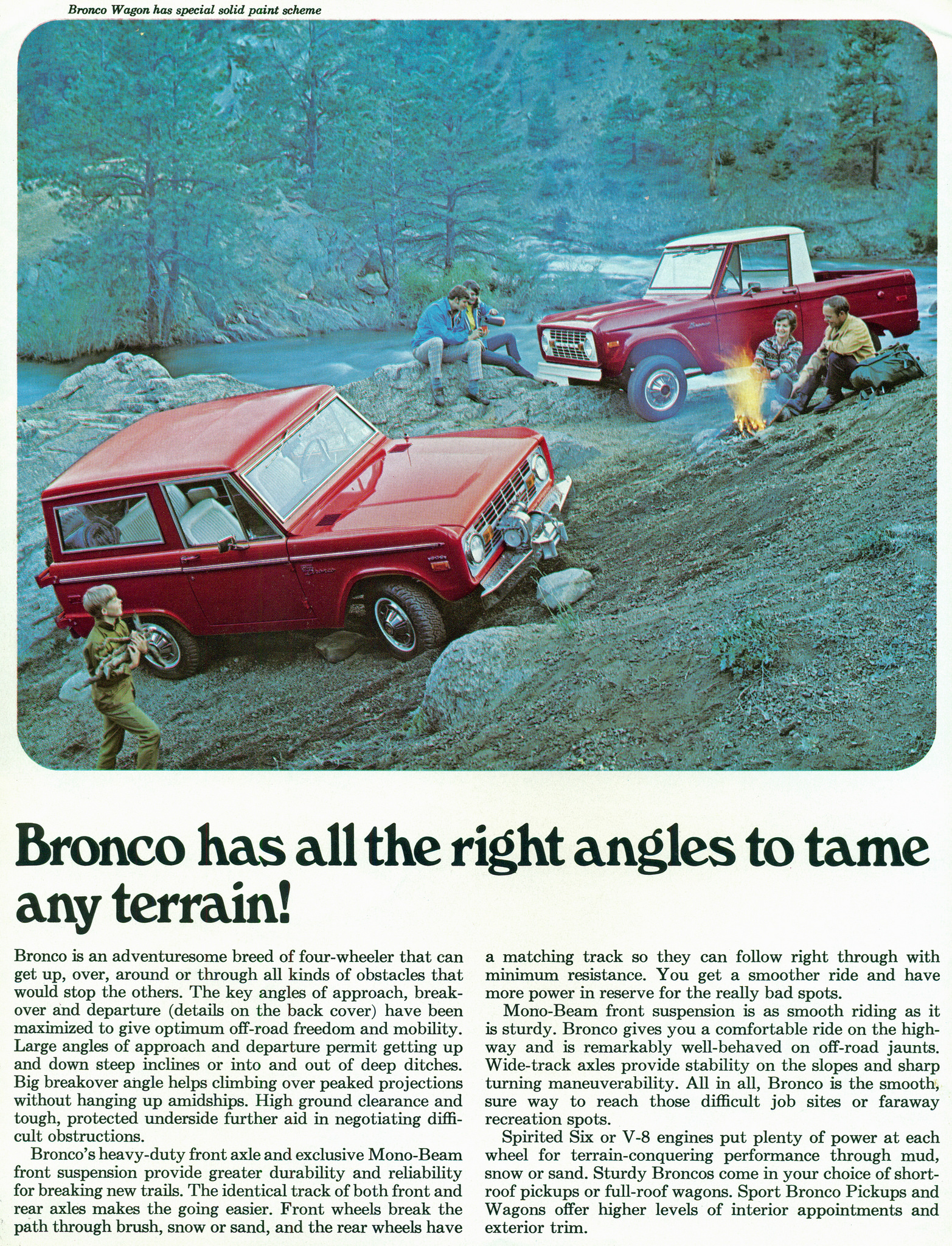 Loading... Please wait...
Loading... Please wait...Shop By Vehicle
Popular Brands
Taming Terrain
Posted by KYTE on 14th Jun 2017
A new car market was beginning to form in the 60's which leaned toward multipurpose use. Jeep and International Harvester were the first to begin building a more maneuverable class of car but the Ford Bronco set the standard for what kind of land a vehicle could cover.
Supervising engineer for the Mustang I concept car, Donald N. Frey, saw that an off-road ready addition to the Ford lineup was needed. A whole new vehicle with a unique body, suspension, and frame were developed under Paul G. Axelrad. The design stayed small to allow for better control and featured a 92-inch wheelbase. The standard engine would be a Ford 170 cubic inch 2.8 litre inline 6 cylinder setup fitted with solid valve lifters, a heavy duty fuel pump, oil bath air cleaner, 6 quart oil pan, and a carburetor with float bowl tilt compensation. The addition of manual locking hubs and a Dana Corporation Model 20 transfer case was the icing on the cake.
Wayne Michigan's Ford Truck Plant put the Bronco together and rolled it out in wagon, pickup, and roadster configurations. Tons of options were available from different seats to a front-mounted winch. A lot of emphasis was put on the versatility of the Bronco and it sold well upon release.
Famous race car builder Bill Stroppe partnered with Holman-Moody to even build a team of Broncos for long distance, off-road racing. The team competed in the Mint 400, Baja 500, and the Mexican 1000 which later became the Baja 1000. A sport package for the Bronco, based on Bill Stroppe's designs, was released through Ford in 1971. This featured quick-ratio power steering, an automatic transmission, fender flares, a roll bar, reinforced bumper, and a padded steering wheel for extra safety. The whole thing was wrapped up in a red, white, blue, and black paint job. This configuration has become particularly collectible over the years with only 650 originally sold.
In 1973 Bronco base engine was replaced by a 200 cubic inch 3.3 litre straight six. An automatic transmission as well as power steering became optional. With these additions, there was an increase in sales and Ford's relatively unchanged Bronco continued to be produced for another four years.
Dick Nesbitt was tasked with designing a new Bronco for 1974. Production was interrupted by the 1970's Oil Crisis and the new model wasn't released until '78.
The body and frame became full-sized and were based off the F-100 truck line. This new design followed a list of requirements laid out which included door interchangeability with Ford trucks and a removable hard top. It also featured a folding rear bench seat and was the last Bronco generation with a solid front axle. A 4-wheel drive powertrain was standard with the choice between a 5.8L 351M v8 and a 6.6L 400 v8.
Before the previous generation was released for sale, the next had already been in planning. From 1980-1986 the design of the Bronco still relied on a F-Series base but became slightly shorter, lighter, and more efficient than the last model.
Two generations followed until the discontinuation of the Bronco after 1996. Improvements focused on aerodynamics, modernization, but were tied directly to the evolution of the F-Series truck and the designs didn't stray very far.
In 2004 a new concept for the Ford Bronco was shown at the North American International Auto Show. This concept looked especially like the first generation Broncos, maintaining a small, boxy appearance. People were excited but nothing official was mentioned about production. However, in 2017, Ford announced that a new Bronco would be showing up for the 2020 model year. Production is planned to occur in the same plant Broncos had been built in for so many years.
Before the widespread popularity of 4-wheel drive and the advent of the SUV, Broncos conquered the land.
